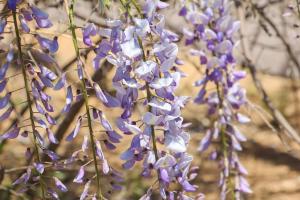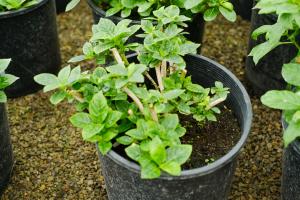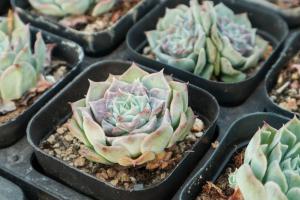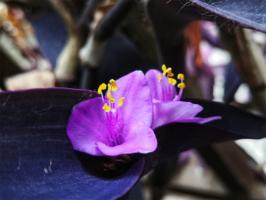A Banana Plant Produces Rhizomes Which Are Involved In
Banana plants are one of the most widely cultivated crops in the world, with a global output of over 150 million tonnes annually. The plant produces not just the well-known edible fruit but also a number of other structures that are involved in its reproduction and survival. One of these structures is the rhizome, a specialized stem that grows horizontally underground and gives rise to the next generation of plants.
The Function of a Rhizome
The rhizome of a banana plant is involved in its vegetative reproduction, which means that it allows the plant to clone itself without the need for sexual reproduction. When a rhizome grows horizontally under the surface of the soil, it sends out shoots that rise up to form new banana plants. This mechanism ensures that the plant can reproduce reliably and quickly, even in conditions that are unfavorable for sexual reproduction or the presence of pollinators.
The Structure of a Rhizome
Rhizomes are typically modified stems that grow horizontally underground. Unlike roots, which are specialized organs for the absorption of nutrients and water, rhizomes have nodes where leaves and branches can grow. The nodes of a rhizome are where the shoots that form new banana plants emerge. Rhizomes also have a network of roots that grow from their lower surface, which helps to anchor the plant to the soil and absorb nutrients.
The Benefits of Rhizomes to Banana Production
The production of rhizomes by banana plants has several benefits for banana farming. Firstly, it allows for the easy propagation of new plants, which can be a more efficient method of cultivation than planting seeds. Secondly, it enables the farmer to maintain the genetic traits of a particular variety of banana, since each new plant produced by a rhizome is a clone of the parent plant. Lastly, rhizomes can provide a mechanism for banana plants to recover from damage or disease, since they allow the plant to produce new shoots even when the aboveground portion of the plant is damaged.
The Challenges of Rhizome Production in Banana Cultivation
Despite the advantages of rhizome production by banana plants, there are also some challenges associated with this method of propagation. The clones produced by rhizomes are genetically identical to the parent plant, which means that they may be susceptible to the same diseases that affect the parent. This can lead to the spread of disease throughout the plantation if the plants are not carefully monitored and treated. Additionally, the production of rhizomes can be affected by soil conditions, with poor drainage, high salinity, or low fertility reducing the number of rhizomes produced by the plant.
Conclusion
The production of rhizomes by banana plants is an important aspect of their biology and has many implications for the farming and cultivation of this crop. Rhizomes provide the plant with a reliable mechanism for vegetative reproduction and allow farmers to undertake efficient propagation of new plants. However, the genetic uniformity of the clones produced by rhizomes can also be a challenge, since it can make the crop more vulnerable to diseases. Overall, the rhizome is a fascinating and important part of the biology of the banana plant, and one that is key to the success of banana farming worldwide.

 how many times do yo...
how many times do yo... how many planted tre...
how many planted tre... how many pine trees ...
how many pine trees ... how many pecan trees...
how many pecan trees... how many plants comp...
how many plants comp... how many plants can ...
how many plants can ... how many plants and ...
how many plants and ... how many pepper plan...
how many pepper plan...

































